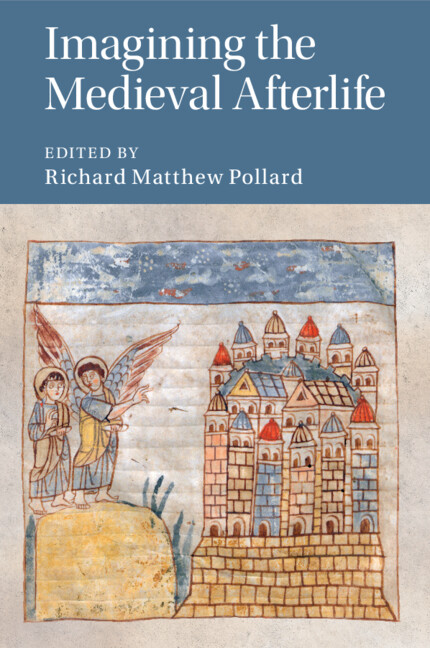Imagining the Medieval Afterlife
Where do we go after we die? This book traces how the European Middle Ages offered distinctive answers to this universal question, evolving from Antiquity through to the sixteenth century, to reflect a variety of problems and developments. Focussing on texts describing visions of the afterlife, alongside art and theology, this volume explores heaven, hell, and purgatory as they were imagined across Europe, as well as by noted authors including Gregory the Great and Dante. A cross-disciplinary team of contributors including historians, literary scholars, classicists, art historians and theologians offer not only a fascinating sketch of both medieval perceptions and the wide scholarship on this question: they also provide a much-needed new perspective. Where the twelfth century was once the 'high point' of the medieval afterlife, the essays here show that the afterlives of the early and later Middle Ages were far more important and imaginative than we once thought.
- Offers the first comprehensive treatment in English of how the afterlife was envisioned, from Antiquity to the end of the Middle Ages
- Includes the most up to date scholarship on the medieval afterlife, with fresh perspectives that push the field in new directions
- Features a range of perspectives from leading historians, art historians, literary scholars, classicists and theologians to afford a cross-disciplinary perspective
Reviews & endorsements
'Imagining the Medieval Afterlife presents an important attempt to offer an overview of medieval visions of the otherworld. In an impressive way, many of the chapters expand on and complement each other. In dialogue, these chapters give insight into various aspects of images of afterlife in the Christian Middle Ages, offering a comprehensive view while repeatedly pointing out that no conclusive findings can be drawn in such a limited space. The coherence and consistency of the articles, which combine both recent scholarship as well as many canonical sources, makes the volume easily accessible and establishes a very valuable resource for research as well as teaching.' Annegret Oehme, Zeitschrift für interkulturelle Germanistik (ZIG)
‘Taken together, the contents of this volume succeed in providing the reader with an overview of the textual and artistic sources for the ways in which medieval people imagined the fates awaiting them after death.’ Scott Bruce, The Journal of Ecclesiastical History
‘The collection of essays is a good resource for students and scholars wishing to gain an overview of historical debates and key texts for the topic. The essays are well written and structured, closely allied to the theme and in dialogue with each other. There is a good interdisciplinary range, including languages, art history, theology, and history, and a useful bibliography is provided.’ Elizabeth Tingle, Speculum
Product details
November 2022Paperback
9781316630785
376 pages
228 × 151 × 20 mm
0.55kg
Available
Table of Contents
- Preface
- List of abbreviations
- List of figures
- 1. Introduction Richard M. Pollard
- Part I. Chronological Surveys:
- 2. Just deserts in the ancient pagan afterlife Susanna Braund and Emma Hilliard
- 3. Visions of the afterlife in the early medieval west Yitzhak Hen
- 4. A Morbid efflorescence: envisaging the afterlife in the Carolingian period Richard M. Pollard
- 5. The afterlife in the medieval Celtic-speaking world Elizabeth Boyle
- 6. Anglo-Saxon visions of heaven and hell Gernot Wieland
- 7. Otherworld journeys of the central middle ages Carl Watkins
- 8. Visions of the otherworlds in the late middle ages, c.1300–c.1500 Gwenfair Walters Adams
- Part II. Theological Perspectives:
- 9. Purgatory's intercessors Isabel Moreira
- 10. The theology of the afterlife in the early middle ages, c.600–c.1100 Helen Foxhall Forbes
- 11. Afterdeath locations and return appearances, from scripture to Shakespeare Henry Ansgar Kelly
- Part III. Artistic Impressions:
- 12. 'Eye hath not seen [...] which things God hath prepared [...] ': imagining heaven and hell in Romanesque and Gothic art Adam R. Stead
- Part IV. Notable Authors and Texts
- 13. Visions and the afterlife in Gregory's dialogues Jesse Keskiaho
- 14. The vision of Tnugdal Eileen Gardiner
- 15. The afterlife in the visionary experiences of the female mystics Debra L. Stoudt
- 16. Dante's other-worldly surprises and this-worldly polemic George Corbett
- Cumulative bibliography.







